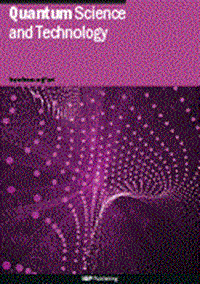On the role of symmetry and geometry in global quantum sensing
IF 5
2区 物理与天体物理
Q1 PHYSICS, MULTIDISCIPLINARY
引用次数: 0
Abstract
Global quantum sensing enables parameter estimation across arbitrary ranges with a finite number of measurements. Among the various existing formulations, the Bayesian paradigm stands as a flexible approach for optimal protocol design under minimal assumptions. Within this paradigm, however, there are two fundamentally different ways to capture prior ignorance and uninformed estimation; namely, requiring invariance of the prior distribution under specific parameter transformations, or adhering to the geometry of a state space. In this paper we carefully examine the practical consequences of both the invariance-based and the geometry-based approaches, and show how to apply them in relevant examples of rate and coherence estimation in noisy settings. We find that, while the invariance-based approach often leads to simpler priors and estimators and is more broadly applicable in adaptive scenarios, the geometry-based one can lead to faster posterior convergence in a well-defined measurement setting. Crucially, by employing the notion of location-isomorphic parameters, we are able to unify the two formulations into a single practical and versatile framework for optimal global quantum sensing, detailing when and how each set of assumptions should be employed to tackle any given estimation task. We thus provide a blueprint for the design of novel high-precision quantum sensors.论对称和几何在全局量子传感中的作用
全局量子传感可以通过有限的测量量在任意范围内进行参数估计。在现有的各种表述中,贝叶斯范式是在最小假设条件下最优协议设计的一种灵活方法。然而,在这个范例中,有两种根本不同的方法来捕捉先验无知和不知情的估计;即要求先验分布在特定参数变换下的不变性,或坚持状态空间的几何形状。在本文中,我们仔细研究了基于不变性和基于几何的方法的实际后果,并展示了如何将它们应用于噪声设置中速率和相干估计的相关示例。我们发现,虽然基于不变性的方法通常会导致更简单的先验和估计量,并且更广泛地适用于自适应场景,但基于几何的方法可以在定义良好的测量设置中导致更快的后验收敛。至关重要的是,通过采用位置同构参数的概念,我们能够将这两个公式统一为一个实用的通用框架,以实现最佳的全局量子传感,详细说明何时以及如何使用每组假设来处理任何给定的估计任务。因此,我们为新型高精度量子传感器的设计提供了蓝图。
本文章由计算机程序翻译,如有差异,请以英文原文为准。
求助全文
约1分钟内获得全文
求助全文
来源期刊

Quantum Science and Technology
Materials Science-Materials Science (miscellaneous)
CiteScore
11.20
自引率
3.00%
发文量
133
期刊介绍:
Driven by advances in technology and experimental capability, the last decade has seen the emergence of quantum technology: a new praxis for controlling the quantum world. It is now possible to engineer complex, multi-component systems that merge the once distinct fields of quantum optics and condensed matter physics.
Quantum Science and Technology is a new multidisciplinary, electronic-only journal, devoted to publishing research of the highest quality and impact covering theoretical and experimental advances in the fundamental science and application of all quantum-enabled technologies.
 求助内容:
求助内容: 应助结果提醒方式:
应助结果提醒方式:


